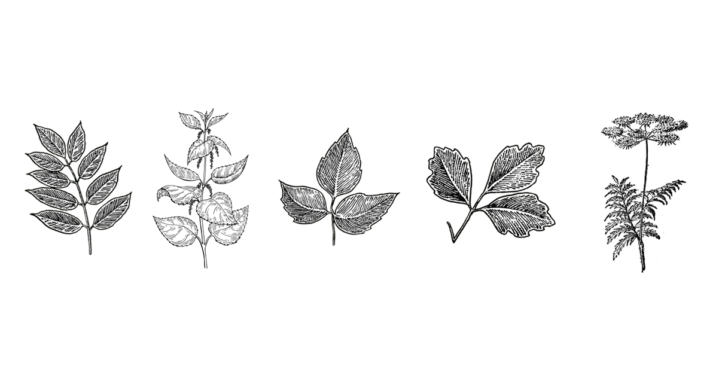Identifying Poisonous Plants: A Guide to Recognizing and Avoiding Common Harmful Flora
Discover the key characteristics of poisonous plants beyond poison ivy, poison oak, and poison sumac. Learn to identify these dangerous plants to ensure a safe and enjoyable outdoor experience
By: Richard Rich
Introduction:
While poison ivy, poison oak, and poison sumac are well-known culprits when it comes to causing rashes and other allergic reactions, there are many other poisonous plants that can have similar effects. This article aims to provide valuable information on identifying these plants, understanding where they are commonly found, and learning how to avoid them.
- Poison Ivy (Toxicodendron radicans) Poison ivy is a plant notorious for causing allergic contact dermatitis due to the presence of urushiol oil in its leaves, stems, and roots. It can grow as a climbing vine, shrub, or ground cover and is commonly found in wooded areas, along riverbanks, and near roadsides in North America. The plant features compound leaves, with each leaf consisting of three leaflets. The leaf edges can be smooth or toothed, and the leaflets are typically shiny with a reddish tinge in the spring.
- Poison Oak (Toxicodendron diversilobum and Toxicodendron pubescens) Poison oak is another plant that contains urushiol oil and can cause allergic contact dermatitis. It can grow as a shrub or climbing vine, depending on the species. Toxicodendron diversilobum, also known as western poison oak, is found on the West Coast of the United States. Toxicodendron pubescens, or eastern poison oak, is native to the southeastern United States. Poison oak has leaves that resemble oak leaves, with lobed edges and clusters of three leaflets.
- Poison Sumac (Toxicodendron vernix) Poison sumac is a deciduous shrub or small tree found in swampy areas in the eastern United States. Like poison ivy and poison oak, poison sumac contains urushiol oil and can cause allergic contact dermatitis. The plant has compound leaves with 7 to 13 leaflets arranged in pairs along a central stem, with one leaflet at the tip. The leaflets have smooth edges and can have a glossy appearance. Poison sumac produces clusters of small, greenish-yellow flowers and white or grayish fruit.
- Giant Hogweed (Heracleum mantegazzianum) Giant hogweed is an invasive plant native to the Caucasus region and now found in parts of North America and Europe. Contact with the plant’s sap can cause phytophotodermatitis, a reaction that makes the skin extremely sensitive to sunlight, leading to severe burns and blisters. Giant hogweed can grow up to 14 feet tall and has large, lobed leaves, white flower clusters, and hollow, ridged stems with purple blotches.
- Stinging Nettle (Urtica dioica) Stinging nettle is a perennial plant found in many parts of the world. The plant is covered with tiny, needle-like hairs that release irritants when touched, causing painful stinging sensations, itching, and redness. Stinging nettle can grow up to 6 feet tall and has dark green, serrated leaves that grow in pairs along the stem. It produces small, greenish-white flowers that hang in clusters.
- Wild Parsnip (Pastinaca sativa) Wild parsnip is a biennial plant native to Eurasia and now found in parts of North America. The plant’s sap contains furanocoumarins, which can cause phytophotodermatitis when it comes into contact with skin and is exposed to sunlight. Wild parsnip can grow up to 5 feet tall and has yellow, umbrella-shaped flower clusters and pinnately compound leaves with toothed
- Water Hemlock (Cicuta spp.) Water hemlock is one of the most poisonous plants in North America. Ingestion of even small amounts can be fatal, causing seizures, respiratory failure, and death. The plant is often found in wet areas like marshes and riverbanks. Water hemlock can grow up to 8 feet tall and has small, white, umbrella-shaped flower clusters and pinnately compound leaves with serrated leaflets. The main stem is hollow and contains a toxic, yellowish liquid.
- Poison Hemlock (Conium maculatum) Poison hemlock is another highly toxic plant that is native to Europe and now found in North America. Ingesting this plant can cause respiratory failure, paralysis, and death. Poison hemlock can grow up to 10 feet tall and has finely divided, fern-like leaves and small, white, umbrella-shaped flower clusters. The main stem is hollow and marked with reddish-purple spots.
- White Snakeroot (Ageratina altissima) White snakeroot is a poisonous plant native to North America. Ingestion can cause tremors, weakness, and even death in humans and animals. The plant is commonly found in wooded areas and can grow up to 5 feet tall. White snakeroot has opposite, serrated leaves and small, white, fluffy flowers in flat-topped clusters.
- Oleander (Nerium oleander) Oleander is a toxic, evergreen shrub native to the Mediterranean region and now found in many parts of the world. All parts of the plant are poisonous, and ingestion can cause vomiting, diarrhea, irregular heartbeat, seizures, and even death. Oleander grows up to 20 feet tall and has long, narrow, dark green leaves and showy, tubular flowers that can be pink, red, or white.
Conclusion:
In addition to poison ivy, poison oak, and poison sumac, numerous other plants can cause rashes or other harmful effects. Learning how to identify these plants and understanding their geographical distribution can help you avoid them and stay safe. When spending time outdoors, it’s essential to be aware of your surroundings and take precautions like wearing long sleeves, pants, and gloves to minimize your risk of exposure to poisonous plants.







